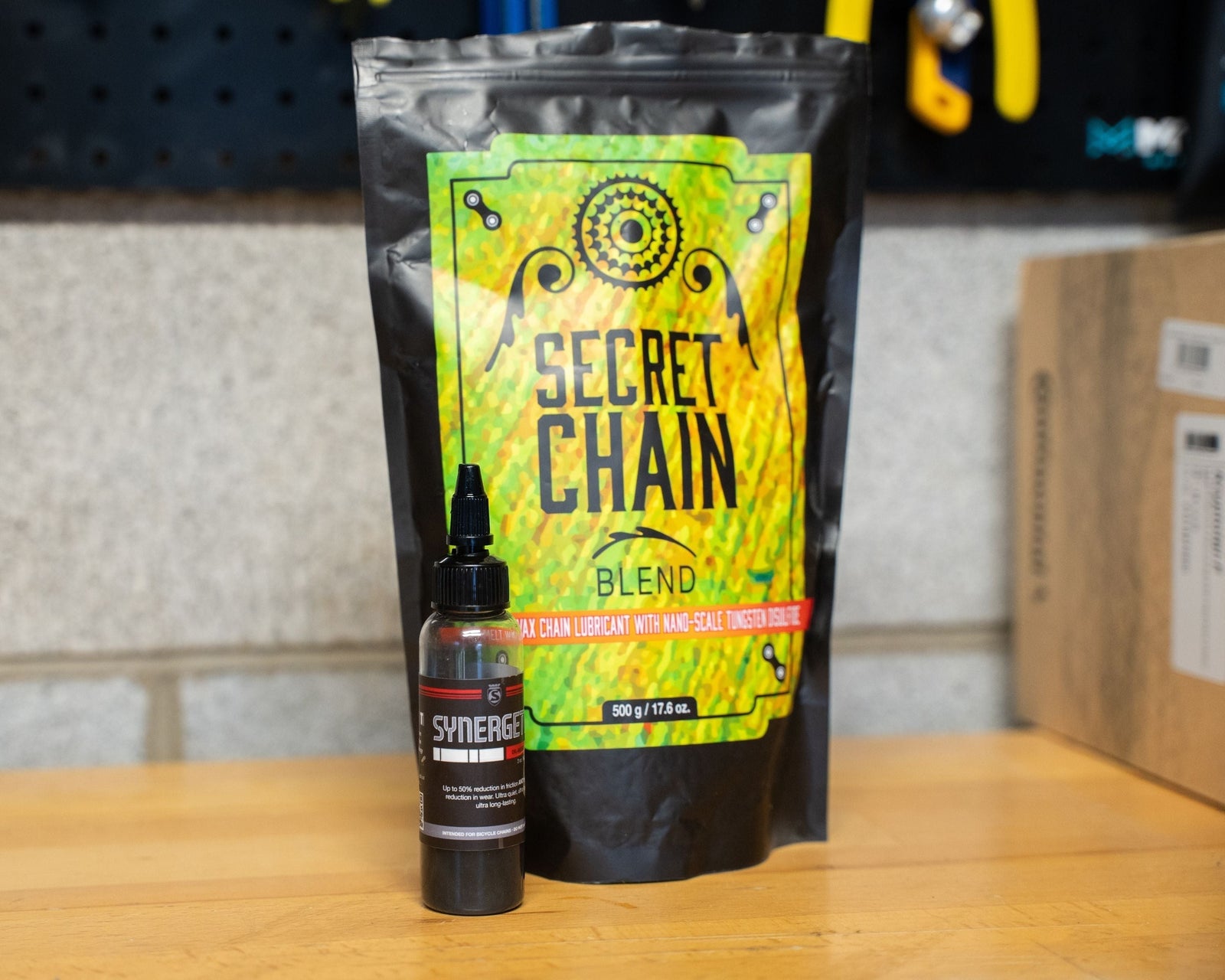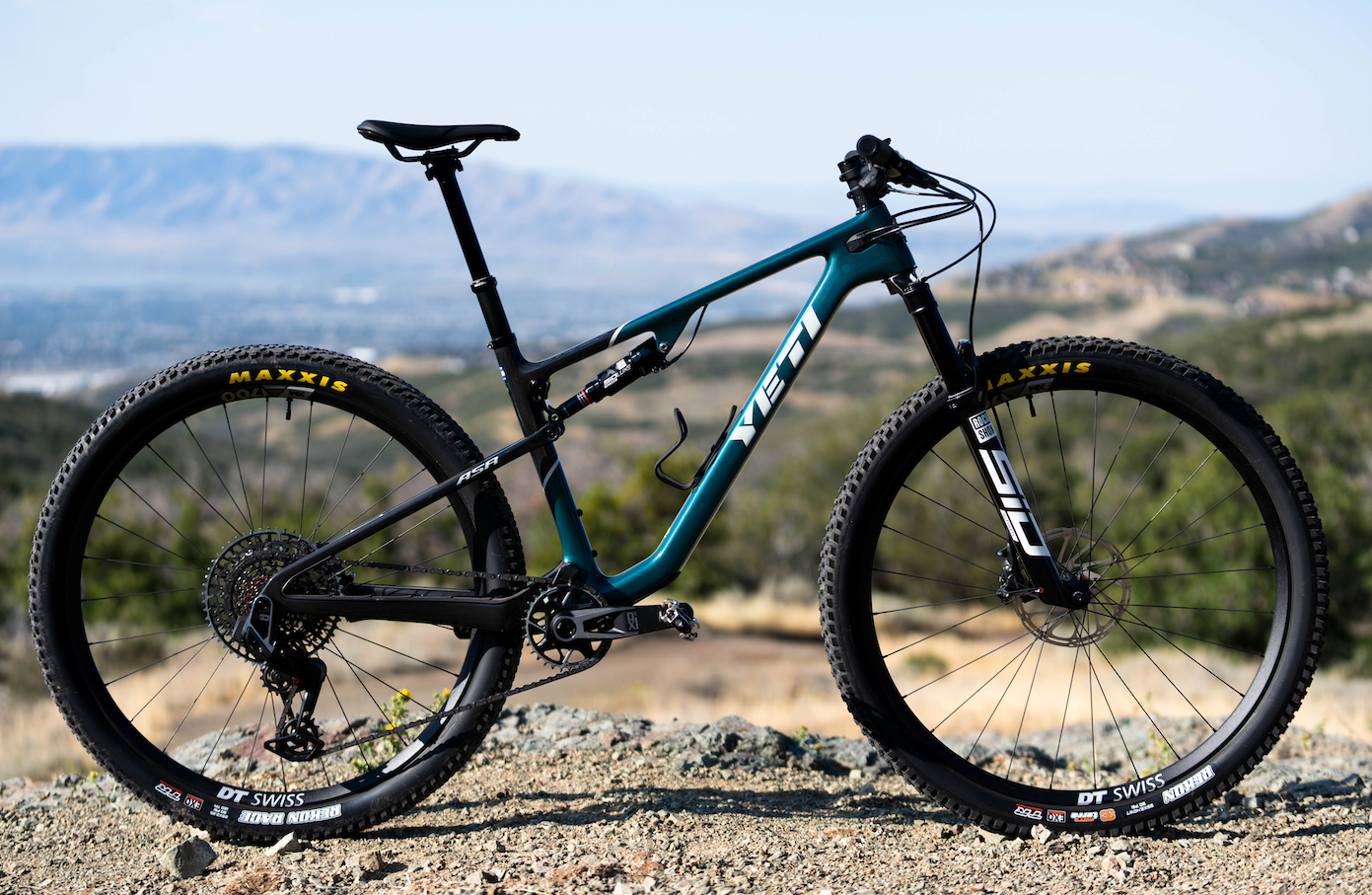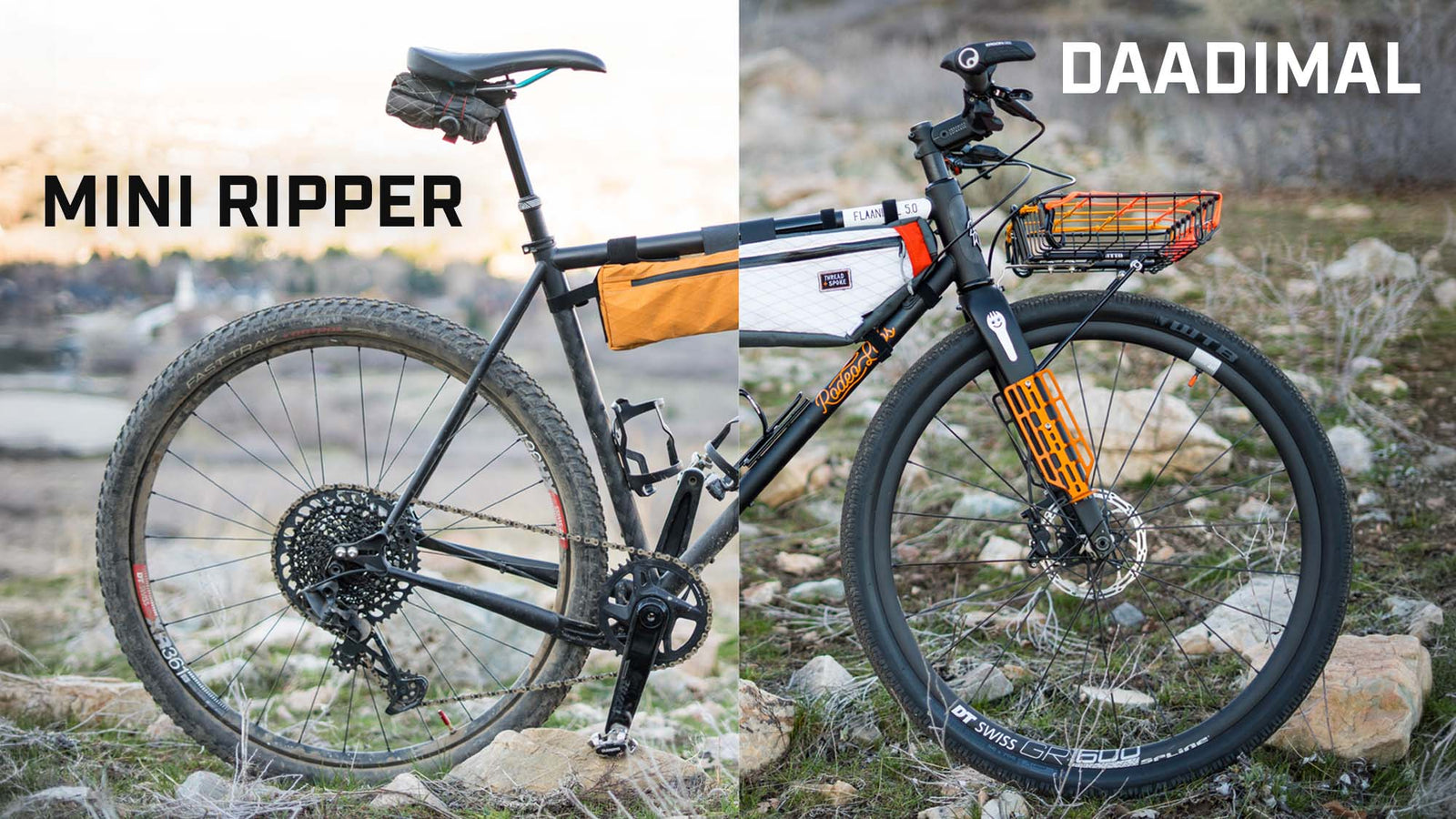SAVE 20% ON ORDERS OVER $45 WITH CODE ‘RACE20’
Useful Trailside Repair Hacks for Every Cyclist
March 17, 2022
If you've been mountain or gravel biking well of the beaten path, you know how a mechanical issue can turn your day upside down. No matter your riding style or skills, the following trailside hacks and repairs should come in handy in your effort to get home or back to the car without hauling your bike out on your back.
Punctured Sidewall
A punctured sidewall miles away from repair tools or your car means getting creative with what you have. If you puncture or slice your sidewall, place a folded energy gel wrapper, gum wrapper, or dollar bill on the inner wall of the tire and pump it up back to full pressure. Whatever material you have, it's purpose is to prevent the inner tube from pushing further out of the puncture. Often, this can give you the help you need to push on. And don't even get us started on super glue... Gorilla Glue (Brush & Nozzle) has gotten me out of more flats than any other bike tool. With some elbow grease and creativity, super glue can become your best friend when in a less than ideal situation.

Zip Ties, Zip Ties, Zip Ties
For cyclists, zip ties are your best and most versatile trail companion. They can be used for anything from reattaching breaks to replacing crank bolts and grips. If something breaks, a zip tie or two can often make or break your day. Try fixing a puncture by blocking off each side of the hole with two zip ties, repairing your helmet, shoes, or anything else that may need tightening with a simple zip tie. In this photo, we are using a zip tie to mimic a wheel truing stand if you ever happen to severely damage your wheel while out on the trails. These could be the most inexpensive lifesavers you could possibly carry!

Quick Links
More of a must-have, rather than a resourceful repair – quick links are unique chain components that allow you to connect or repair chain links without pushing the entire chain out and driving it back. If you have a chain without a quick link, we recommend getting one for it, however, always ensure the link matches your chain type, i.e. 8 -, 9 -, 10 -, 11 - speed. Quick links are often directional and only function when installed the right way, so be sure to verify the direction. Once you’ve assembled them on the chain loosely, make sure it locks with the two pins snapping fully into their closed position, which ensures it cannot open. When it comes to quick link tools, you can remove the master link with a shoelace or with a small pair of chain pliers. To set the masterlink, you can apply force with pedal stroke or use the chain pliers and listen for a "pop" sound.

Multi-Use Tire Levers
Always use what you can to remove a flat tire. For example, if you forgot your tire levers, try removing the quick-release skewer from your wheel, edging the lever between the rim and the tire to pry the flat or busted tire off. This will save your hands from prying and a world of headache and get you back to riding quicker. We always recommend carrying two tire levers.

Single Speed Transfer
When irreparable damage occurs to your mechanics, the only choice you may have is to choose a single gear and stick with a single speed. In this case, remove your derailleur and stow it in your bag for later. Find the gear that works the best and shorten the chain to fit accordingly. Use the middle chainring on a triple crankset or a small ring on a double to rejoin the chain using a quick link. If you are on a bouncy full suspension bike, lock out the suspension and go steady. Use the shocks to compress and counter your body. As long as you don't overload the threshold of maximum pressure, you should be good to go.

One Size fits all Tube
While carrying a replacement tube is always a good idea, there are moments when your riding buddies might be slightly less prepared. If you're going to carry a replacement tube for yourself, make sure it is the right size. In the case of an emergency or if a friend pops his replacement tube, a 27.5” tube is often the go-to one size fits all option. You’ll likely be able to stretch it onto a 29”, making it not that different from a 26” tube for those friends riding smaller wheels. Always carry an extra tube even when riding a tubeless set-up.

Rotor Bolt Switch
Losing a cleat bolt during your ride can be a downer. Fortunately, your disc rotors have some similar-sized rotor bolts that you can use for spares in dire circumstances. The bolts might be a little round and bulky on the bottom of your shoe, but being able to clip in is a whole lot better than not. A small flat bolt from your water bottle cage can also work and is maybe more accessible than a rotor disc bolt.

These trailside hacks aren't complete fixes but they can get you home sooner and safer than walking. You might not be able to finish your ride in the same style but getting somewhere is better than being stuck and the day turning into a disaster. For more riding tips and tricks, visit the Thread and Spoke blog today.
Also in Journal

Hot Wax vs. Chain Lube
March 13, 2025
If there's one thing every cyclist obsesses over (besides leg hair and donuts), it's drivetrain efficiency and making your bike silent. A clean, smooth-running chain can make or break your ride, and the battle between hot waxing and traditional chain lube is hotter than a mid-July crit race. As someone who has spent too much time in the garage tinkering with my drivetrain, I've tested both methods for years and wanted to share my findings.

Yeti ASR Review: The New Standard for XC Bikes?
September 12, 2024

2 Flaanimals - 2 Staff Builds | Rodeo Labs Flaanimal 5.0 Breakdown
June 20, 2024



